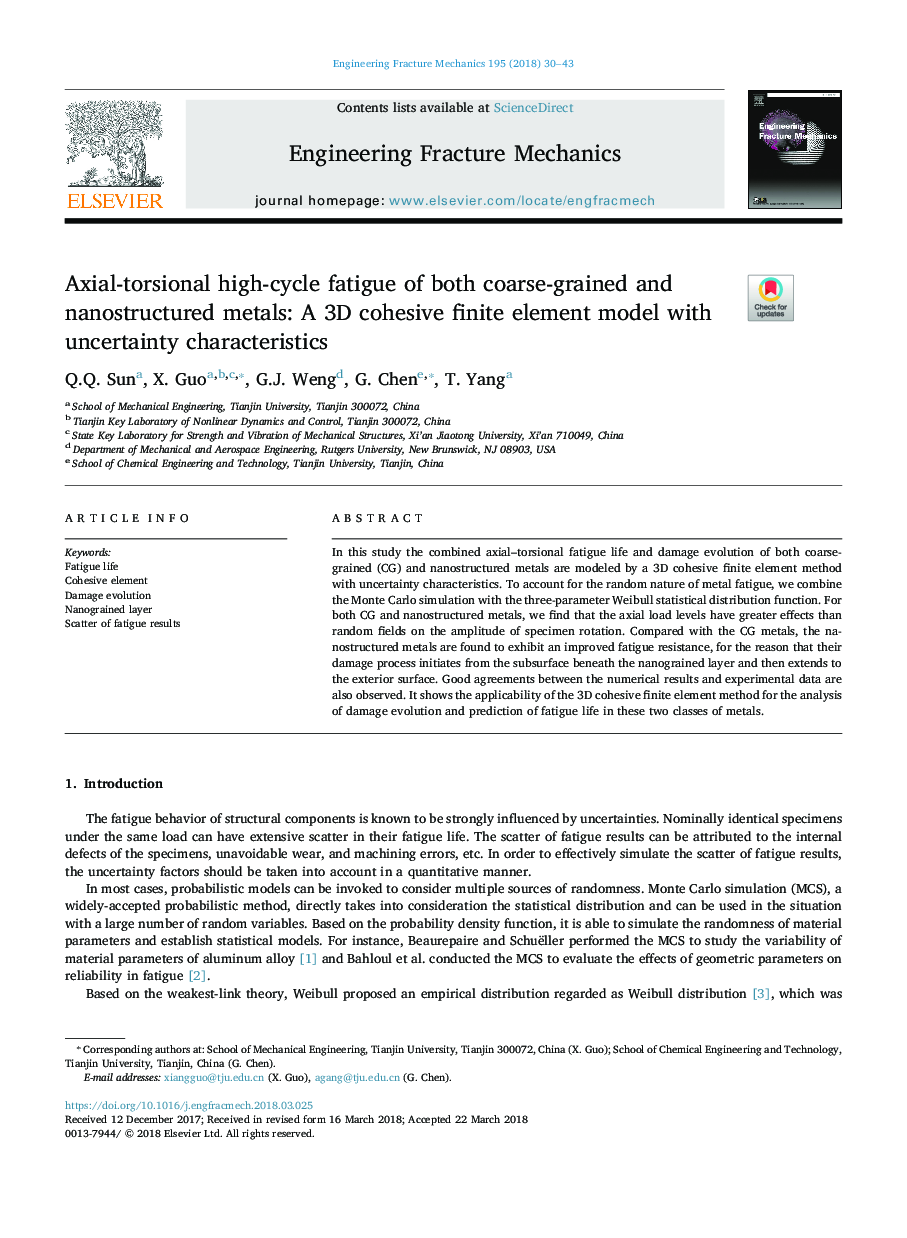| Article ID | Journal | Published Year | Pages | File Type |
|---|---|---|---|---|
| 7168831 | Engineering Fracture Mechanics | 2018 | 14 Pages |
Abstract
In this study the combined axial-torsional fatigue life and damage evolution of both coarse-grained (CG) and nanostructured metals are modeled by a 3D cohesive finite element method with uncertainty characteristics. To account for the random nature of metal fatigue, we combine the Monte Carlo simulation with the three-parameter Weibull statistical distribution function. For both CG and nanostructured metals, we find that the axial load levels have greater effects than random fields on the amplitude of specimen rotation. Compared with the CG metals, the nanostructured metals are found to exhibit an improved fatigue resistance, for the reason that their damage process initiates from the subsurface beneath the nanograined layer and then extends to the exterior surface. Good agreements between the numerical results and experimental data are also observed. It shows the applicability of the 3D cohesive finite element method for the analysis of damage evolution and prediction of fatigue life in these two classes of metals.
Related Topics
Physical Sciences and Engineering
Engineering
Mechanical Engineering
Authors
Q.Q. Sun, X. Guo, G.J. Weng, G. Chen, T. Yang,
